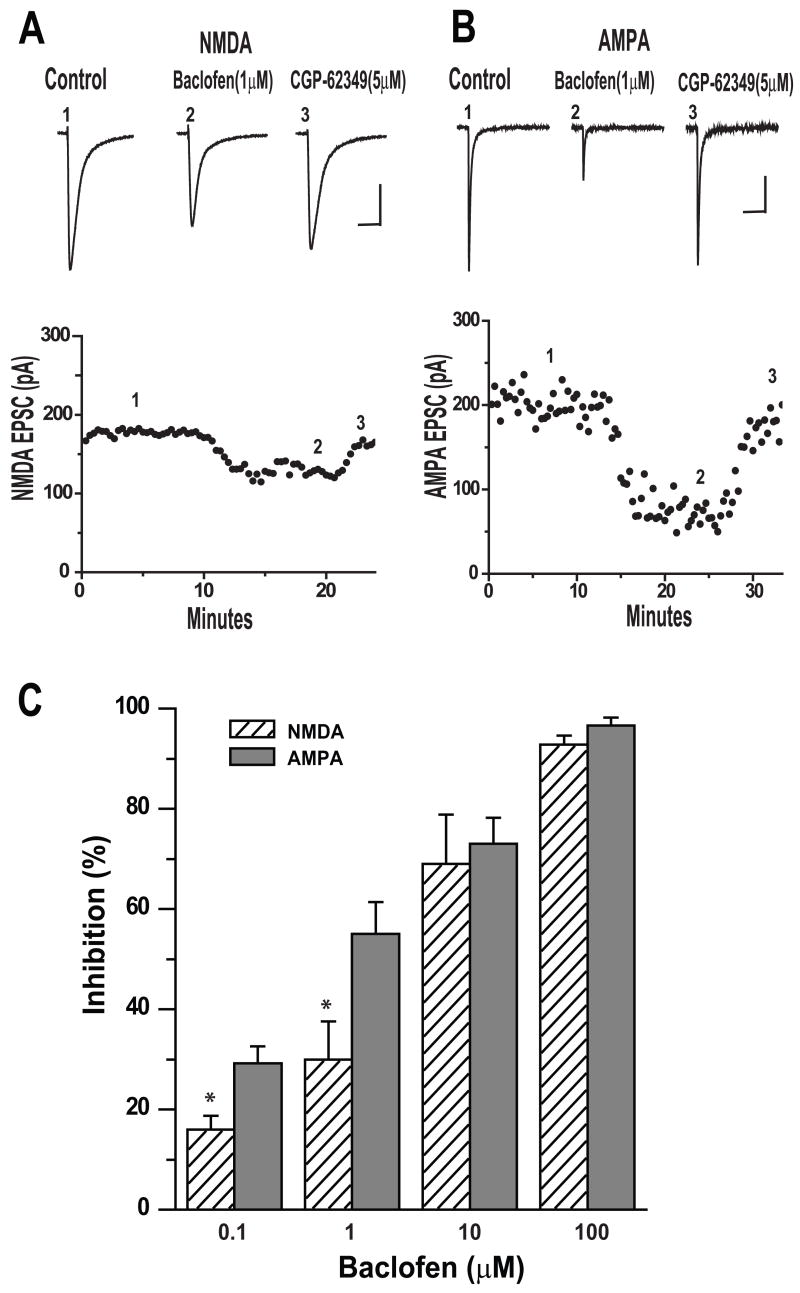Figure 4.
Baclofen has more potent inhibitory effects on evoked AMPA EPSCs than NMDA EPSCs. (A). Upper panel, average traces (5–7) of NMDA receptor-mediated EPSCs isolated from cell held at −40mV are shown. 1 μM baclofen reduced the peaks of EPSCs and was reversed by bath application of 5μM CGP 62349. Number placements correspond to the traces evoked at the time shown in the time course of the responses in the lower panel. Lower panel. Scale bar: 200ms/50pA. Time course of baclofen induced inhibition of EPSCs recorded from the same cell. (B). Upper panel, average traces (5–7) of AMPA receptor-mediated EPSCs isolated from a cell held at −70mV are shown. 1 μMbaclofen reduced the peaks of EPSCs and was reversed by bath application of 5μM CGP 62349. Number placements correspond to the traces evoked at the time shown in the time course of the responses in the lower panel. Scale bar: 100ms/50pA. Lower panel: Time course of GHB induced inhibition on the amplitude of IPSCs recorded from the same cell (C) Bar graph shows the baclofen causes a dose-dependent inhibition on mean amplitude of NMDA-EPSCs (0.1 (n=4); 1 (n=6); 10 (n=6) and 100μM (n=6) and AMPA-EPSCs (0.1 (n=5); 1(n=4); 10(n=7) and 100μM(n=5)) ( One-way ANOVA, p<0.05), respectively. * denotes p <0.05.

